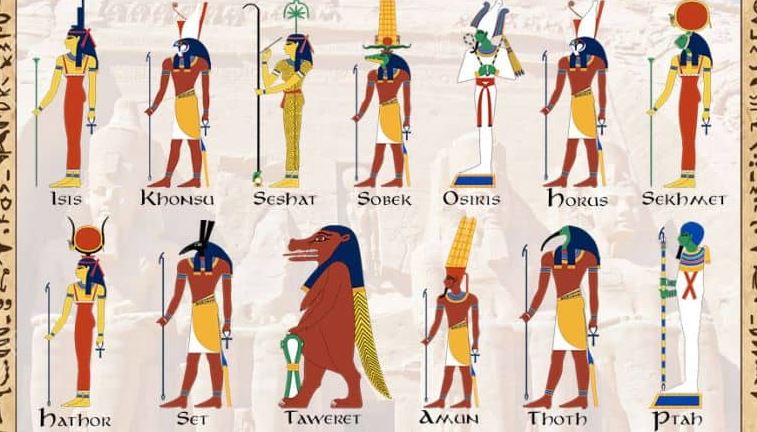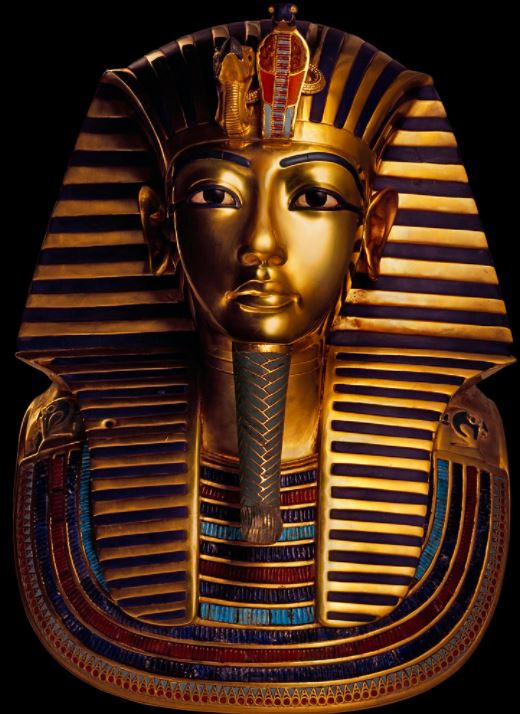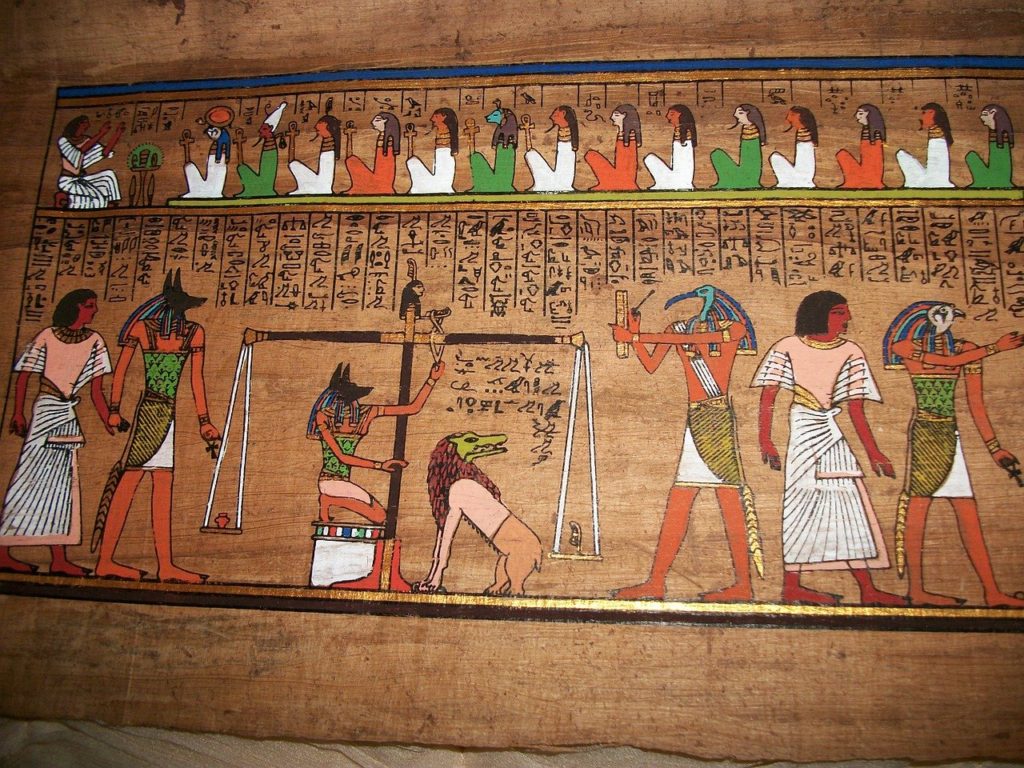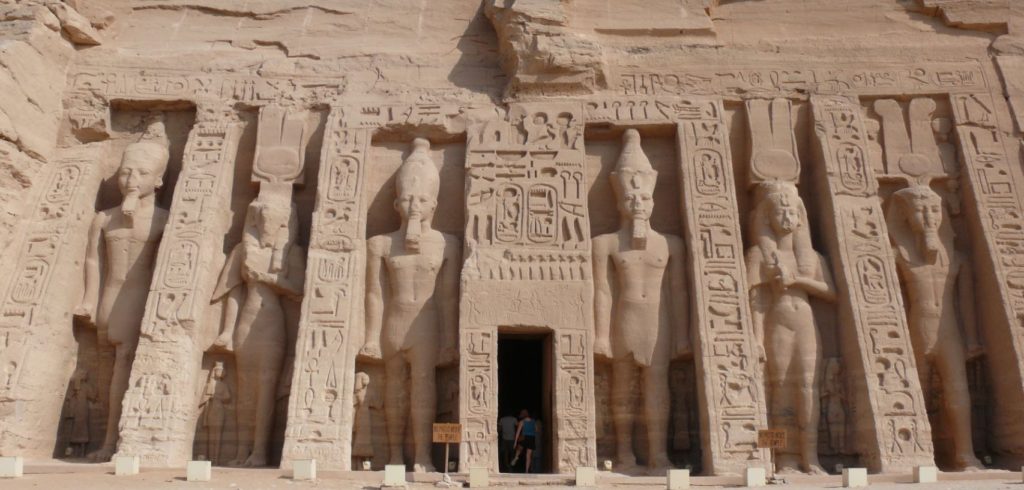All You Need To Know About The Ancient Egyptian Gods and Goddesses
For the ancient Egyptians, the relationship with their ancient Egyptian gods and goddesses was absolutely crucial and a fundamental core of their society. These deities, including the likes of Osiris, the god of the afterlife, and Isis, the goddess of fertility and magic, played a pivotal role in the lives of the people.
For personal reasons or for a matter of higher stakes, the Egyptians believed that their prayers and rites would help them achieve the divine help to achieve their desires or their needs.
This was particularly evident during times of difficulty such as the plagues, where the Egyptians would appeal to their gods for relief and protection.
This religion is known to have appeared sometime in the prehistoric period of human history, so we could say that the ancient Egyptian gods and goddesses are quite old, thousands of years old actually.
Their origins can be traced back to the pre-dynastic period, marking the beginning of the rich and complex pantheon that would come to include not only Egyptian but also Sumerian gods in the extended list of deities worshipped.
One of the most interesting facts about this religion is their vast list of Egyptian gods and goddesses and the relationships that deities had between one and another.
Important deities like Horus, the sky god, were often depicted engaging in battles with his brother Seth, representing the eternal struggle between order and chaos.
These facts are reflected in the most important myths about the ancient Egyptian gods and goddesses, as they were a crucial part of the story of the deity to help the people understand the personality of a god.
The Osiris myth, for example, tells the story of Osiris, the god of the afterlife, his death at the hands of his brother Seth, and his resurrection, symbolizing the cycle of life and death and the eternal nature of the soul.
In this pantheon, there were both male and female Egyptian gods, and we can state this fact by the many statues and pictures of Egyptian gods and goddesses that this culture has left throughout History.
Isis was usually represented alongside her son Horus, symbolizing the protective nature of the mother and the potential of the new generation.
Influence of the ancient Egyptian gods and goddesses over the culture
The gods of Egyptian mythology clearly have influenced the lives of these people since the very beginning
The current pharaoh was the main authority that had the task to perform rituals and offerings for the Egyptian gods and goddesses, as it was considered that his powers over Egypt came directly from the gods.
This strong connection between the pharaoh and the deities underscored the belief in the divine right of kings, with the pharaoh often depicted as the son of a god, such as Horus.
That is precisely why it is not uncommon to see many of the pharaohs represented with some ancient Egyptian gods and goddesses, or even a reincarnation of them in some cases.
For instance, pharaohs were often depicted with the head of a god, symbolizing their divine authority and connection with the sun and sky. This iconography was especially prevalent during the New Kingdom period, where the fusion of royal and divine imagery reached its zenith.
For example, Cleopatra was considered to be an incarnation of the Egyptian goddess Isis, and in many pictures and statues, they share many characteristics. She was often shown with the Greek goddesses’ attributes, blending cultures in the same way that her cult did.
Her cult played a significant role in society, illustrating the deep integration of deity worship in daily life and the afterlife.
As you can imagine, for a pharaoh to claim that he or she was the reincarnation of a god was an important motive for the people to worship them as such.
It was a clear symbol of the power and control of the pharaohs. This claim was supported by elaborate rituals and temple ceremonies, further establishing the pharaohs’ divine status among the other gods.
How did the Egyptian mythology gods and goddesses intervene with humans?
The gods of Egyptian mythology were said to be rulers of the force of nature as well as being involved in human lives by providing the very important concept of the maat.
Horus was the son of Osiris and Isis and played a crucial role in the Osiris myth, symbolizing war and hunting prowess, and acting as a protector. He was identified with the sky god, soaring across the sky and through the underworld, illustrating the gods’ omnipresence in the lives of the Egyptians.
The morality in the Egyptian religion
The maat was considered a moral concept that ruled the Egyptian society and it dictated one of the most important ways of behavior for these people: Everyone should live in an orderly way, avoiding any interference with the well-being of others.
This concept was so integral that it influenced the most important deities in the pantheon to endorse these values.
After death, it was believed that the human would be judged based upon if the person would have followed the maat.
The verdict received would allow the human soul to enter the afterlife, which was a space in which both humans and gods exist on the same level, allowing us to understand the mysterious nature of the ancient Egyptian gods and goddesses.
The Egyptian god Osiris, was the god of the afterlife and was the son of the earth god Geb and the sky goddess Nut, making him a central figure in guiding souls into the afterlife.
As a matter of fact, the Egyptian god Osiris was the judge of the human souls, and that is depicted in several pictures in which he stands alongside the Egyptian god Anubis, who helps him in this matter.
This partnership between Osiris and Anubis underscores the importance of the afterlife journey and the gods’ roles in it.
The free will in the Egyptian religion
According to the Egyptian religion, all humans had free will to follow or to ignore the guidance of the gods and the maat, but they were under the risk of being punished with ailments or with natural disasters.
Nonetheless, the benevolence of the gods could also be invoked for protection and healing, demonstrating their dual role as both judges and guardians.
However, following the guidance of the ancient Egyptian gods and goddesses could cure illness or extend their age.
This belief underscores the gods’ integral role in the health and longevity of the people, binding the divine to the mortal realm in a perpetual cycle of guidance, judgment, and worship.
For those cases in which a human would behave according to the expected by the Egyptian religion and yet receive suffering, it was considered to be a product of the Egyptian god Set, who protected the underworld and personified chaos and destruction.
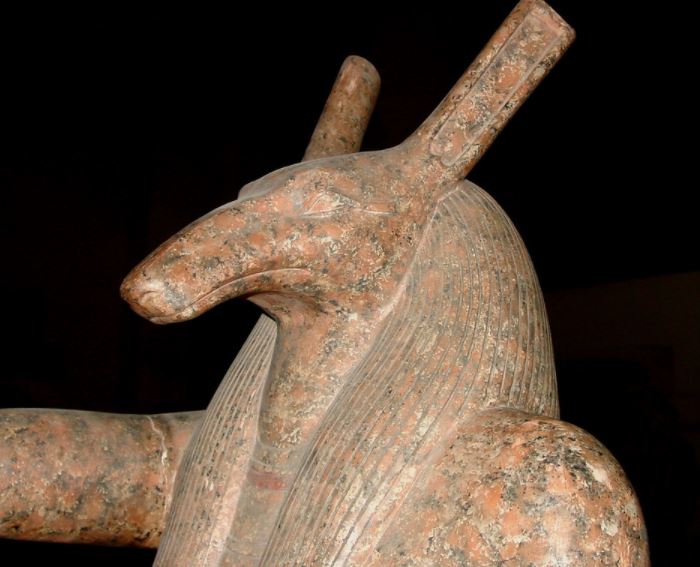
The presence of the ancient Egyptian gods and goddesses in the human world
Even when they were considered to be everywhere, the truth is that the contact between the humans and the Egyptian gods and goddesses was limited. Among these, Sekhmet, the lion-headed goddess associated with war and healing, was revered across the ancient world.
Her cult spread widely, and she was also associated with the sun, embodying the destructive force of the setting sun.
In the texts, paintings, and statues, the gods of Egyptian mythology appeared with their human forms.
However, deities like Sekhmet could also be depicted in a fully animal form, symbolizing their immense power and divine nature. But when it came to real life, they considered that was the “ba” of the god that it came to the human realm.
The “ba” of the Egyptian gods
The “ba” could be considered the essence of the god for the Egyptian religion. It was said that the “ba” would leave the divine realm to dwell in the statues or pictures of the Egyptian god or goddess.
This belief allowed the gods to have a presence in the human world, with the Nile River playing a crucial role in their worship, as it was considered the artery of life by the Egyptians.
Thanks to this, the ancient Egyptian gods and goddesses were able to take a physical form, combining a human body and animal features for many deities. For that reason, the people considered the statues and pictures to be sacred and they purify them with rituals for the god’s “ba” to dwell in them.
Once finished the process, the people could come to these sacred statues to pray and receive divine messages from their gods. Osiris, the god of the underworld, was particularly venerated, as he was considered the patron god of the deceased, ensuring their passage through the underworld each night.
The temples were sanctuaries of the Egyptian gods and goddesses and it was there where all these rituals were carried out.
That is the reason why it is typical to see a high density of statues and pictures near these constructions, each representing the myriad of deities associated with different aspects of life and the afterlife, from the god Thoth, associated with wisdom and writing, to Isis, who was identified as the mother and protector of the infant Horus in the Osiris myth.
List of Egyptian gods and goddesses
Let us take a look now at the main Egyptian gods and goddesses in this religion.
| Name | God/Goddess Of | Power | Appearance | Role |
| Ra | Sun | Creation and Sun | Man with Head of a Falcon and the Sun above him | Creator of the Universe |
| Anubis | Death | Protector of Tombs | Human with Dog Head | Judge and Defender of Dead Souls |
| Hathor | Love and Beauty | Supreme Power, Eternal Youth. Control over Man | Woman with Cow Head or Woman with Lion Head | Mother, Protector of Pharaohs |
| Horus | War and Hunt | Superhuman Strength and Stamina | Man with Falcon Head | Protector |
| Nut | Sky and Motherhood | Control Celestial Bodies | Woman with a Pot of Water, a Cow, a Winged Figure or an Arc Stretched over the Earth | Mother, Protector and Ruler of Celestial Bodies |
| Geb | Earth | Over Earth | Man with a Snake Head, or Human man with a goose on his Head | Creator of Earth |
| Osiris | Underworld | Life and Natural Cycles | Man with Green Skin or a Mummy | Lord of the Underworld |
| Isis | Wisdom, Magic and Fertility | Magical Healing | Woman with wings | Mother, Protector Healer |
| Thoth | Wisdom | His Words are Magical | Man with an Ibis Head, an Ibis or a Baboon | Creator |
| Sekhmet | War and Healing | Destruction and Healing | Woman with Lion Head | Eye of Ra |
| Set or Seth | Confusion and Chaos | Disguise and Unmatched Strength | Man with Animal Head | Creator of Chaos |
| Mut | Family | Giver and Taker of Life | Vulture or Crowned Woman | Mother |
| Ptah | Craftsmanship | Creation Through Words and Spells | Man With Green Skin and Blue Helmet | Architect of the World |
Egyptian gods of love
Most of the deities who represented love were personified by goddesses.
The most important was Hathor, who not only embodied love and beauty but was also revered as a protector of the pharaohs and the mother of the sun every night, renewing the sun’s journey across the sky.
Egyptian gods of the underworld
While the most important and known Egyptian god of the underworld is Osiris, other minor deities should be mentioned here. Osiris, often associated with the crook and flail, symbolizes the authority of pharaohs.
After his death, he played a pivotal role in the underworld, judging the souls of the deceased.
- Osiris, god of the dead and the Underworld, was usually depicted holding a crook and flail
- Am-heh, devourer of millions, eater of eternity
- Ba-Pef, the ram-headed god
- Hery-sha-duat, god of the Underworld in charge of the Duat, the land between the dead and the living
- Mehen, the serpent god protector of Ra
- Amn, the goddess who welcomes the souls of the dead
Egyptian gods of the afterlife
The afterlife was the space where the souls of the dead humans coexisted with the Egyptian gods and goddesses after the judgment of Osiris.
Here, there were many deities to be considered, such as the goddess Hathor, who was revered for motherhood and fertility, and also played a significant role in the afterlife, ensuring the welfare of the souls.
- Ra, the Sun God who was involved in the creation and in the afterlife
- Imentet, an afterlife goddess linked to Isis and Hathor, embodying the west bank where the dead were believed to journey
- Seker, the falcon god
- Wepwawet, god of warfare and the afterlife
- Heret-Kau, protector goddess of the souls of the dead humans in the afterlife
Egyptian gods of death
The most important goddess of death in Egyptian mythology is by far Anubis, but he is not the only one.
Anubis, guardian of the dead, ensured that they were prepared for the afterlife, embodying the principles of mummification and protection.
- Anubis, god of the dead, was usually depicted overseeing the mummification process to ensure that she protected the deceased
- Osiris, god of the dead and the Underworld, significant figure in the Egyptian Book of the Dead
- Kebehut, the daughter of Anubis and the goddess of freshness.
She helped her father to mummify dead bodies
- Pelican, a minor goddess of the dead
.

